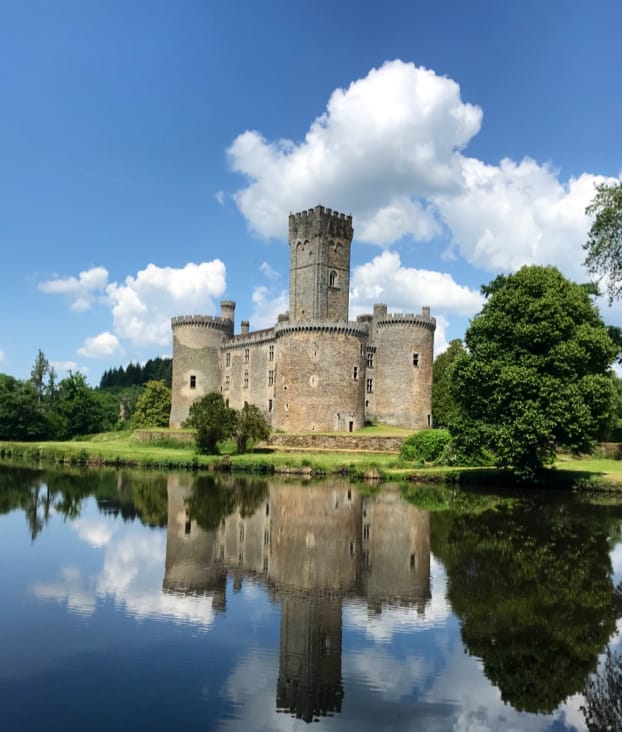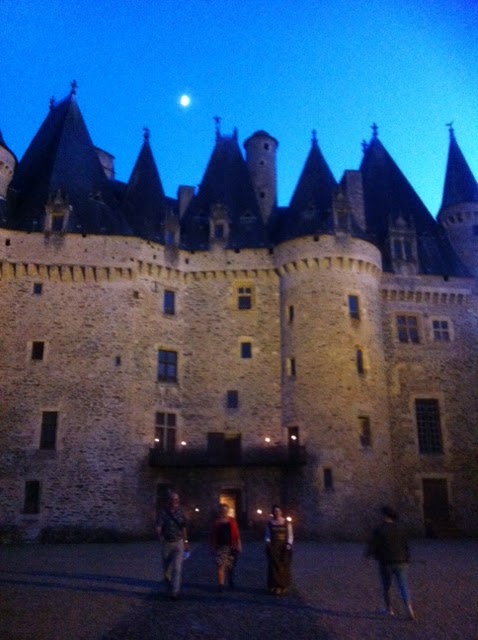Château de Montbrun: A Historic Castle in Dournazac, France
Visitor Information
Google Rating: 4.2
Popularity: Low
Google Maps: View on Google Maps
Official Website: www.montbrun.com
Country: France
Civilization: Unclassified
Remains: Military
History
The Château de Montbrun is located in the commune of Dournazac in modern-day France. The site has been occupied since at least the 11th century and was initially established by the medieval inhabitants of the region, who laid the foundations of what would become a fortified estate.
The earliest known fortification dates from the 11th century, characterized by a high motte—a raised earthwork typical of early medieval castles—positioned directly behind the present-day castle structure. By the 12th century, a substantial stone castle featuring a Romanesque keep was built on this site, marking the transition from timber to stone fortifications. In the complex political and military landscape of the time, the lords of Montbrun played notable roles. In 1199, Pierre Brun, lord of Montbrun, was co-commander of the garrison at nearby Château de Châlus-Châbrol during the siege where King Richard the Lionheart of England was fatally wounded, highlighting the martial significance of the family and region.
The original stone castle suffered major damage by fire and was largely reconstructed during the 15th century. This rebuilding phase altered the fortress’s defensive and residential aspects to reflect late medieval architectural tastes and needs, resulting in the large main residence accompanied by round towers. The castle’s strategic importance and occupancy continued through successive centuries but was not immune to the upheavals of the French Revolution, during which it was looted and suffered further damage.
In the 19th century, efforts were made to restore the castle following its revolutionary decline. However, tragedy struck again in 1917 when another significant fire broke out. Subsequent restoration work in the 20th century sought to repair and conserve the structure. From 1995 onwards, the castle was brought back to life as a private residence and has since been fully restored by Maarten Joost Lamers, a Dutch owner. Its interiors were officially recognized as a historic monument in 1946, with the exterior and surrounding grounds receiving protection status in 1990. Today, Château de Montbrun stands as a notable heritage landmark within its regional cultural and natural park communities.
Remains
The Château de Montbrun is set upon a raised insular platform bordered by ponds, remnants dating back to between the 12th and 14th centuries. This natural defensive arrangement emphasizes the castle’s medieval design, integrating water features to enhance security. The foundation rests on metamorphic augen gneiss rock, a characteristic stone typical of the local geological environment, giving the structure a durable and regionally connected appearance.
One of the most prominent surviving elements is the tall Romanesque keep, originally constructed in the 12th century. In the 14th century, this keep was enhanced with machicolations—openings between the supporting corbels of the parapet used for dropping defensive materials—which added a layer of fortification. Beyond this, the 15th-century main residence was designed with four large round towers placed at each corner. These towers, while imposing, were accompanied by large mullioned windows—windows divided by vertical stone bars—that favored interior light and comfort over military defensibility.
Remains of knights’ houses, known as milites castri, lie behind the main castle building. These structures are part of the late medieval reconstruction efforts and reflect the residential and administrative needs of the castle’s retainers or warriors serving the lord. The ancient motte supporting the original 11th-century castle remains visible and includes an underground network of galleries. These galleries contain small cavities carved directly into the walls, the purpose of which is traditionally linked to storage or defense, although specific functions remain undocumented.
Inside, the castle has been updated with modern amenities while respecting the historic fabric. The interior spans approximately 3,500 square meters and includes a luxurious suite equipped with a jacuzzi and sauna, fifteen bedrooms each with private bathrooms, and several reception areas. Other notable features comprise a two-story library, a music room, and a meeting room, blending historical architecture with contemporary living standards. Due to multiple interventions—especially after the 1917 fire and late 20th-century restoration efforts—the castle is well preserved and retains much of its medieval character alongside modern comforts.










